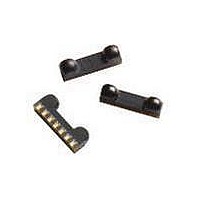HSDL-3208-021 Lite-On Electronics, HSDL-3208-021 Datasheet - Page 22

HSDL-3208-021
Manufacturer Part Number
HSDL-3208-021
Description
Infrared Transceivers IR Transceiver 115Kb/s
Manufacturer
Lite-On Electronics
Type
TX/RXr
Datasheet
1.HSDL-3208-021.pdf
(23 pages)
Specifications of HSDL-3208-021
Wavelength
875 nm, 880 nm
Continual Data Transmission
115.2 Kbit/s
Radiant Intensity
8 mW/sr
Half Intensity Angle Degrees
30 deg to 60 deg
Pulse Width
4 us, 1.6 us
Maximum Rise Time
50 ns, 600 ns
Maximum Fall Time
50 ns, 600 ns
Led Supply Voltage
0 V to 6.5 V
Maximum Forward Current
50 mA
Operating Voltage
2.4 V to 3.6 V
Maximum Operating Temperature
+ 70 C
Minimum Operating Temperature
- 25 C
Dimensions
7.4 mm x 2.9 mm x 1.8 mm
Data Rate
115.2Kbps
Peak Wavelength
875/880nm
Angle Of Half Sensitivity
60/30°
Fall Time
600/50ns
Rise Time
600/50ns
Operating Supply Voltage (typ)
2.5/3.3V
Operating Supply Voltage (min)
2.4V
Operating Supply Voltage (max)
3.6V
Mounting
Surface Mount
Pin Count
7
Operating Temp Range
-25C to 70C
Operating Temperature Classification
Commercial
Idle Current, Typ @ 25° C
100µA
Link Range, Low Power
30cm
Operating Temperature
-25°C ~ 70°C
Orientation
Side View
Shutdown
*
Size
7mm x 2.8mm x 1.6mm
Standards
IrPHY 1.4
Supply Voltage
2.4 V ~ 3.6 V
Lead Free Status / RoHS Status
Lead free / RoHS Compliant
Available stocks
Company
Part Number
Manufacturer
Quantity
Price
Part Number:
HSDL-3208-021
Manufacturer:
AGILENT
Quantity:
20 000
22
Window Material
Almost any plastic material will
work as a window material.
Polycarbonate is recommended.
The surface finish of the plastic
should be smooth, without any
texture. An IR filter dye may be
used in the window to make it look
black to the eye, but the total
optical loss of the window should
be 10% or less for best optical
performance. Light loss should be
measured at 875 nm.
The recommended plastic
materials for use as a cosmetic
window are available from General
Electric Plastics.
Recommended Plastic Materials:
Material
Number
Lexan 141L
Lexan 920A
Lexan 940A
Note: 920A and 940A are more flame retardant than 141L.
Recommended Dye: Violet #21051 (IR transmissant above 625 nm).
Flat Window
(First Choice)
Figure 32. Shape of windows.
Light
Transmission
88%
85%
85%
Haze
1%
1%
1%
Shape of the Window
From an optics standpoint, the
window should be flat. This
ensures that the window will not
alter either the radiation pattern of
the LED, or the receive pattern of
the photodiode.
If the window must be curved for
mechanical or industrial design
reasons, place the same curve on
the back side of the window that
has an identical radius as the front
side. While this will not completely
eliminate the lens effect of the
front curved surface, it will
significantly reduce the effects.
The amount of change in the
Curved Front and Back
(Second Choice)
Refractive
Index
1.586
1.586
1.586
radiation pattern is dependent
upon the material chosen for the
window, the radius of the front and
back curves, and the distance from
the back surface to the transceiver.
Once these items are known, a lens
design can be made which will
eliminate the effect of the front
surface curve.
The following drawings show the
effects of a curved window on the
radiation pattern. In all cases, the
center thickness of the window is
1.5 mm, the window is made of
polycarbonate plastic, and the
distance from the transceiver to
the back surface of the window is
3 mm.
Curved Front, Flat Back
(Do Not Use)














